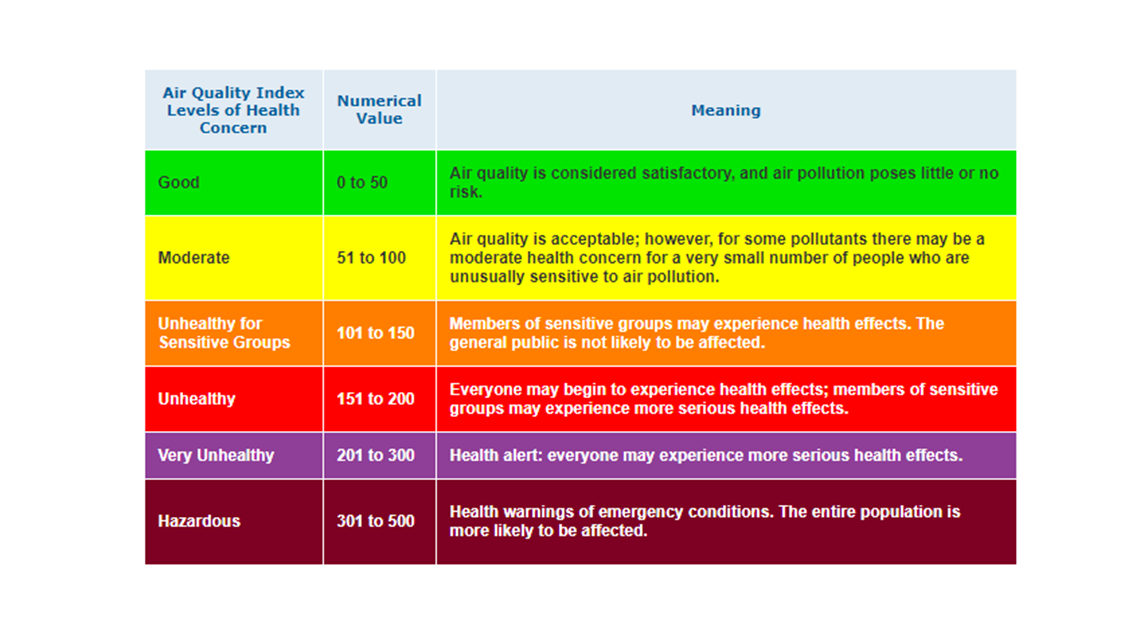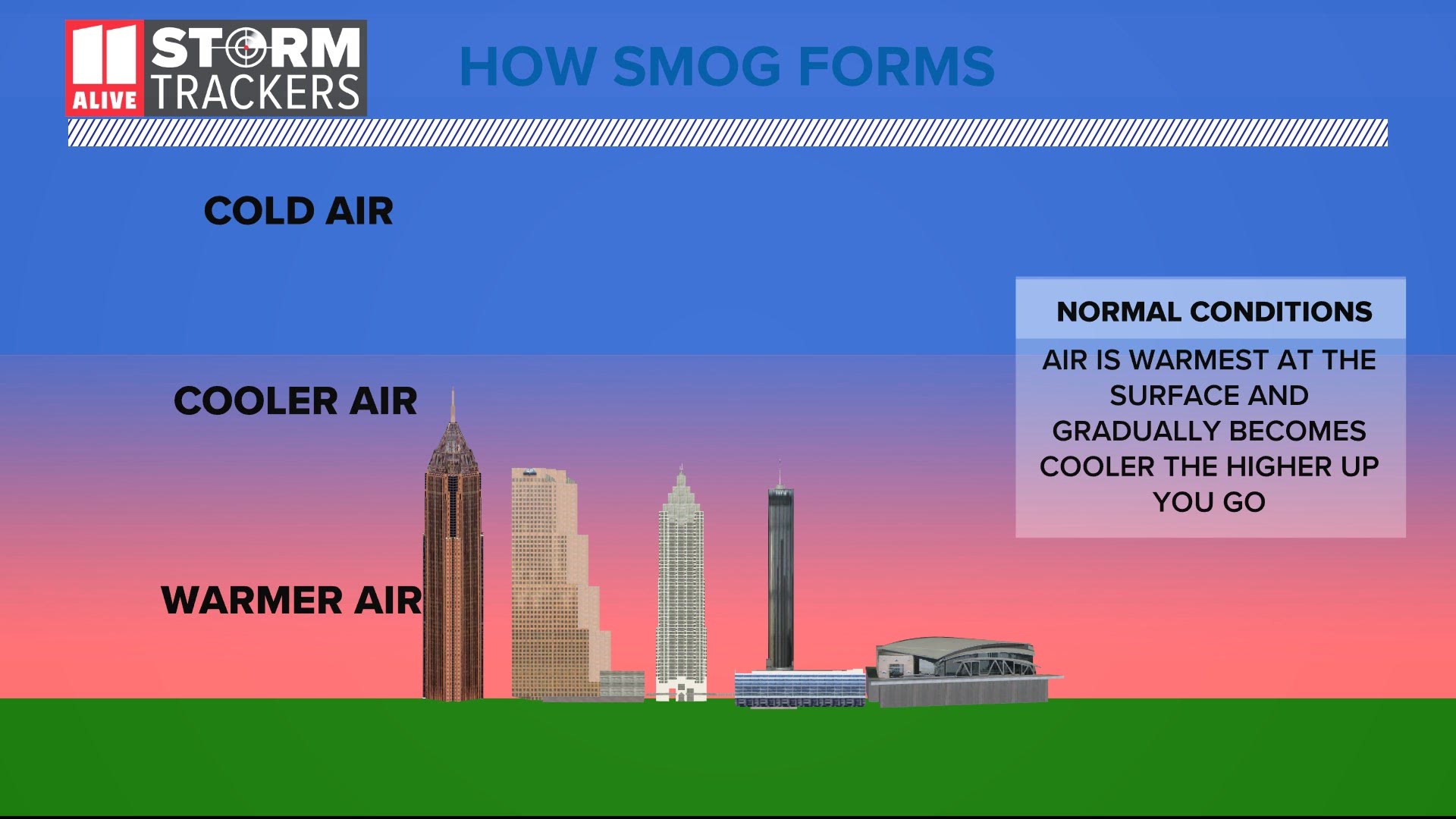According to the federal Environmental Protection Agency, the Air Quality Index is measured on a 500-point scale. The values on that scale are also tied to a six-point, color-coded system -- from Code Green (Good) to Code Maroon (Hazardous).
Each category corresponds to a measure of air quality that helps determine the level of health concern.
- When the Air Quality Index is between 0 and 50, conditions are considered Good and are listed as Code Green. In this category, air pollution poses little or no risk.
- With an Air Quality Index between 51 and 100, conditions are listed as Code Yellow and are considered Moderate. Air quality is considered acceptable, but there may be a moderate concern for a small number of people.
- An Air Quality Index of 101 to 150 brings Code Orange conditions. The air is considered Unhealthy for Sensitive Groups. People with lung disease, older adults and children are at greater risk from exposure to ozone, whereas persons with heart and lung disease, older adults and children are at greater risk from the presence of particles in the air.
- An Air Quality Index of 151 to 200 will result in Code Red conditions. At that point, the air is considered Unhealthy. Everyone may begin to experience some adverse health effects, and members of the sensitive groups may experience more serious effects
. - When the Air Quality Index is 201 to 300, the conditions hit Code Purple and termed Very Unhealthy. This would trigger a health alert signifying that everyone may experience more serious health effects.
- With an Air Quality Index of 301-500, conditions are at Code Maroon and considered Hazardous. This condition would trigger a health warning of emergency conditions. The entire population would be more likely to be affected by these conditions.


According to the EPA, the air quality is a measure tied to five major air pollutants that are regulated by the Clean Air Act: ground-level ozone, particle pollution -- or particulate matter, carbon monoxide, sulfur dioxide and nitrogen dioxide.
There are two types of ozone as defined by the EPA - ozone in the upper atmosphere, or "stratospheric ozone" is "good" ozone, because it protects us from ultraviolet radiation from the sun. Ground-level ozone is considered "bad" because it can trigger various health problems, particularly for children, the elderly and those who have health problems like asthma.
Particle pollution, also known as particulate matter or PM, is a general term for a mixture of solid and liquid droplets suspended in the air. It can include any number of components or compounds including acids (such as sulfuric acid), inorganic compounds (such as ammonium sulfate, ammonium nitrate, and sodium chloride), organic chemicals, soot, metals, soil or dust particles, and biological materials (such as pollen and mold spores).
Particulate matter can become a major issue near busy roads, in urban areas (especially during rush hour), and in industrial areas. It can also become an issue when there is smoke in the air, as when found near fires, whether controlled like near barbecue pits or fireplaces, or uncontrolled sources like wildfires. Finally, on hot, humid days, when air pollution is allowed to build up and stagnate, particulate matter can become much more apparent in the outside air.
Carbon monoxide is a colorless, odorless gas that can be harmful when inhaled in large amounts. Carbon monoxide is released when something is burned. The biggest sources of carbon monoxide to outdoor air are cars, trucks and other vehicles or machinery which burn fossil fuels.
There are dangers from some types of space heaters, leaking chimneys and furnaces and gas stoves, which can affect air quality indoors, necessitating the presence of a carbon monoxide detector in your home.
Sulfur dioxide comes from the burning of either sulfur or materials that contain the element - usually from the burning of fossil fuels at power plants and other industrial facilities. Other sources include industrial processes such as extracting metal from ore; natural sources such as volcanoes; and locomotives, ships and other vehicles and heavy equipment that burn fuel with a high sulfur content.
Nitrogen dioxide is released into the air from the burning of fuel. It forms from the emissions of cars, trucks, buses, power plants and off-road equipment. Breathing air with high concentrations of nitrogen oxide can irritate the human respiratory system. In addition, it reacts with other chemicals in the atmosphere to form acid rain as well as to make up the visible haziness in the air we most commonly associate with smog.
POWER OUTAGES CHECK | Georgia Power customers, check here. Georgia EMC customers check here.
Have a news tip? Email news@11alive.com, visit our Facebook page or Twitter feed.


